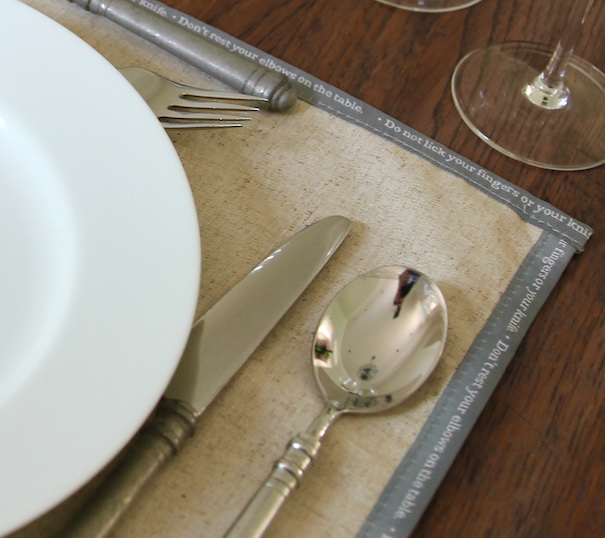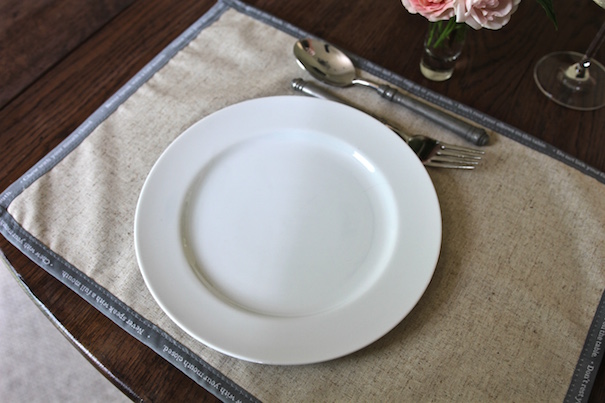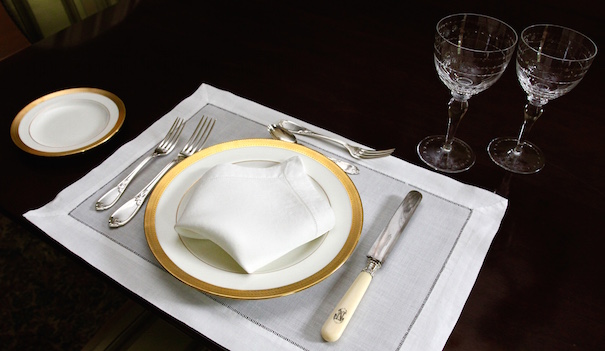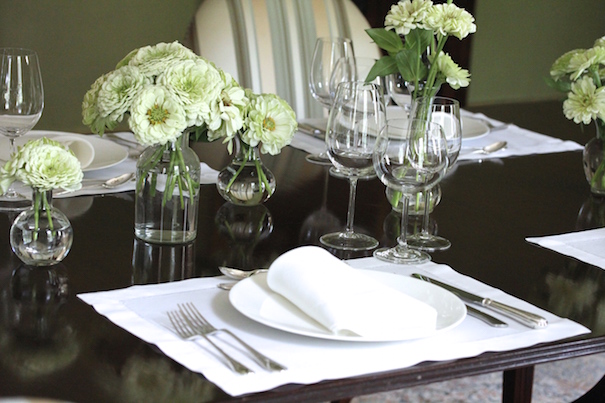This is a subject that makes people nervous, because nobody wants to invite friends over and then worry about whether or not they set the table properly – or, worse, that they might use the wrong fork or bread plate at an important dinner and embarrass themselves. Like it or not, table manners are a reflection of one’s education, and people can be judgmental about it. There’s no need to memorize a long list of arcane rules; good manners are a reflection of common courtesy and logic, so if you don’t know what to do, do what seems sensible and you’ll be fine.

With that in mind, here’s all you really need to know:
1. Don’t eat like a pig. Don’t load up your fork and shove enormous amounts of food into your mouth. Put your fork or spoon down after every few bites, to make sure you’re not eating too quickly, and for God’s sake, don’t talk with your mouth full. Sitting near someone who is talking with their mouth full puts their seatmate at ground zero of uncontrollable spitballs of partially-masticated food particles flying into the face all night. It’s the absolute worst – especially in a business setting.

2. When faced with a puzzling multi-utensil situation, start at the outside of your place setting, farthest from the plate, and work inward for each course. Hint: the salad fork will always be smaller than the entrée fork. When in doubt, follow your host.

3. If you find a fork and spoon set at the top of your place setting, those are meant for dessert. Don’t use them until dessert is served, when you can slide them down to either side of your dessert plate.


The dessert fork and spoon, and how they are moved down to either side of the dessert plate.
4. Bread plates – are always to the left of your place setting. This can be confusing if you’re seated at a large table where all of the dishes are squeezed together closely on the table. If one person gets this wrong and uses the bread plate on the right, it throws the whole table off, which I’ve always found to be amusing. I don’t, however, think it’s funny when the person seated to my left begins to eat the bread from my bread plate as if it’s their own – especially when I’ve already buttered and eaten some of it myself. That’s just lazy.

A standard luncheon or dinner setting. Note, the bread plate to the left, and salad fork at the farthest point from the plate. If the first course is to be a soup, there will not be a salad fork. Coffee or tea should be placed to the right of the place setting, and the cup should not be placed on the table until desert is served. The knife edge should always face inward, toward the plate.



